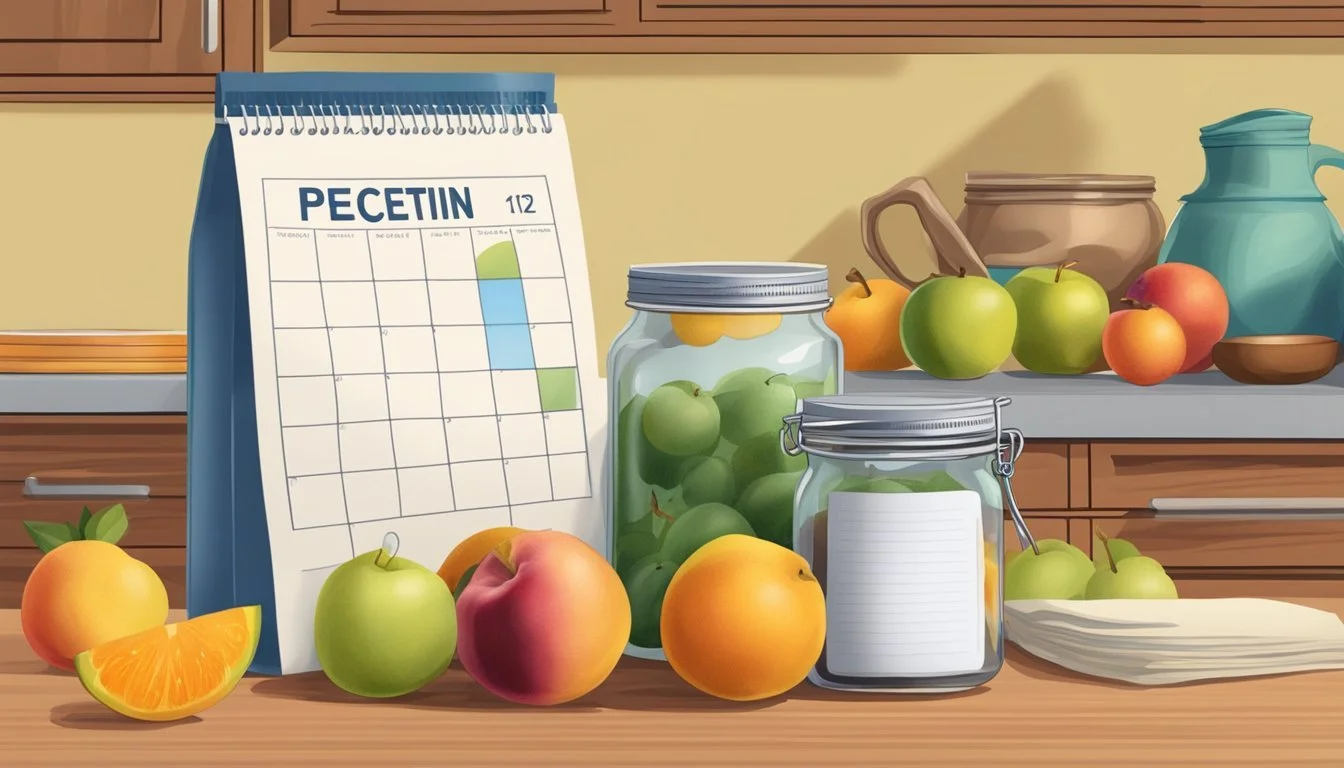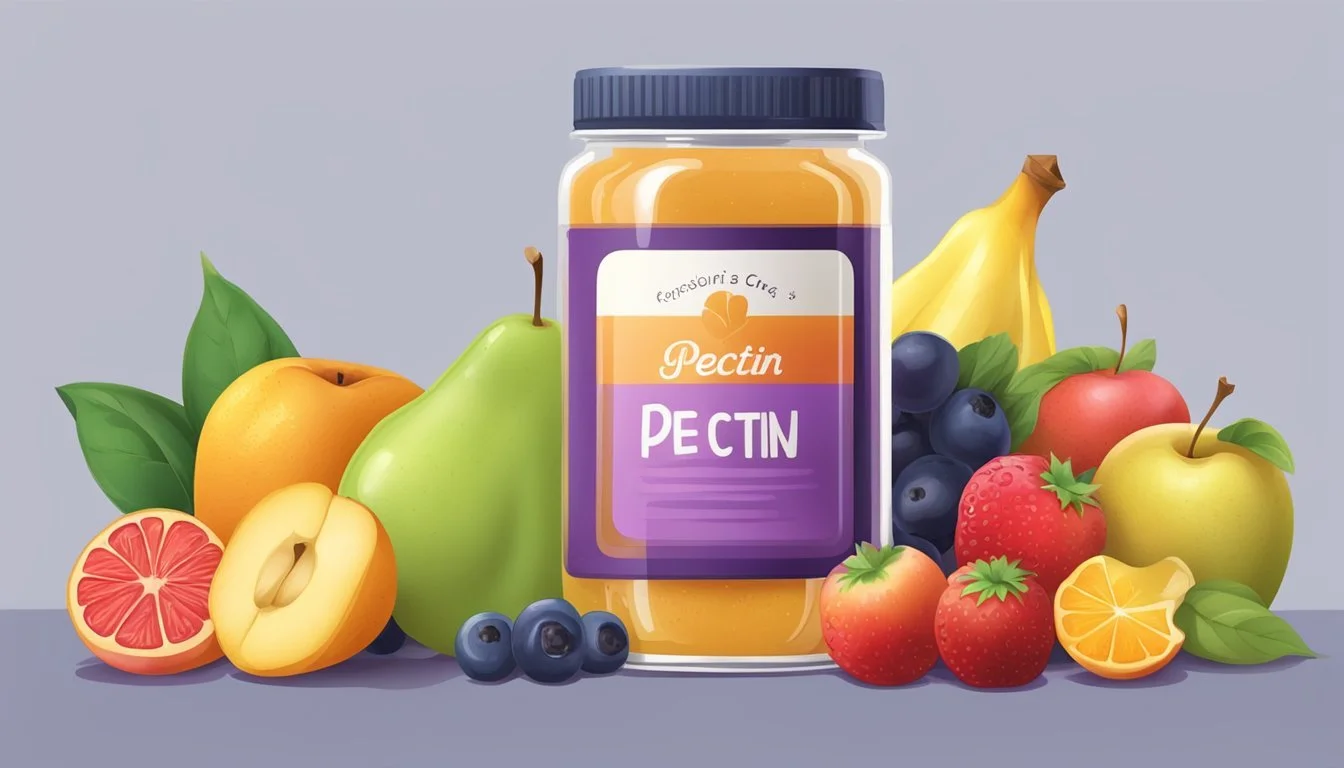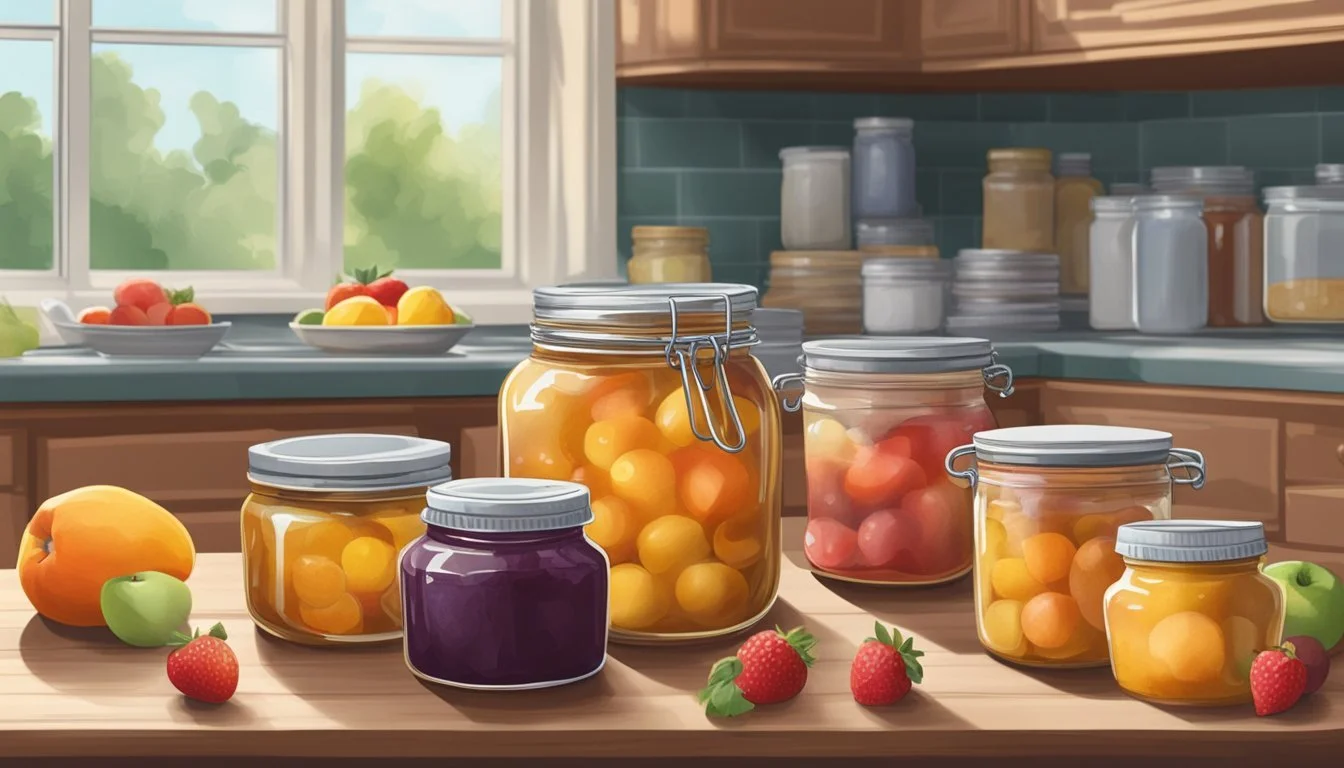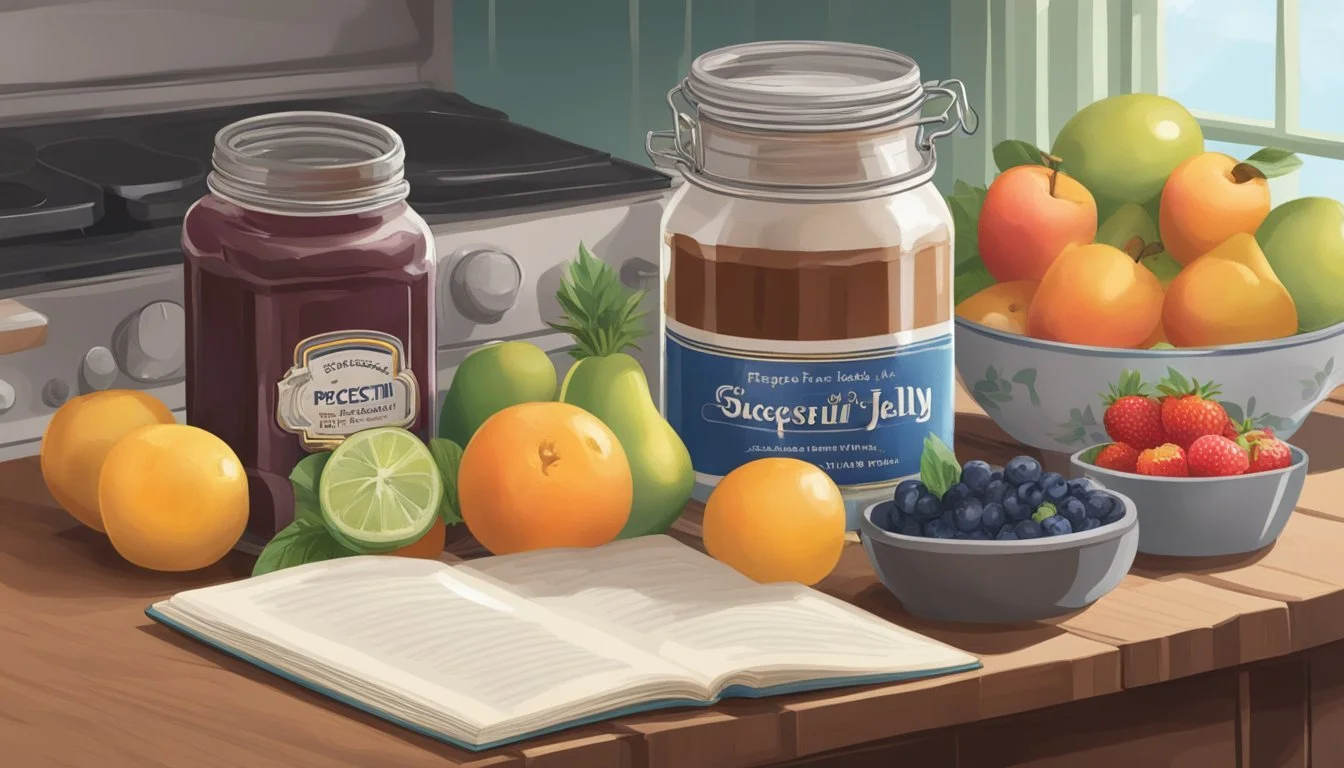Does Pectin Expire?
Shelf Life and Storage Tips
Pectin, an essential ingredient in many food preservation recipes, particularly for making jams and jellies, does have an expiration date. Yes, powdered pectin does expire. While it can be stored for extended periods, pectin loses its gelling potency over time, resulting in a less reliable gelling process in your preserves. This can affect the quality and texture of your homemade jams and jellies, leading to potential disappointments in your food preservation efforts.
The expiration date on pectin packaging is a crucial guideline for ensuring the best results in your culinary endeavors. Using expired pectin doesn't pose a food safety issue, but its reduced effectiveness may cause issues with achieving the desired consistency. This is true for both liquid and powdered forms, highlighting the importance of adhering to the manufacturer's instructions and expiration dates for optimal results.
Understanding the shelf life and proper storage of pectin can make a significant difference in the success of your recipes. By storing pectin in a cool, dry place and checking expiration dates before use, you can ensure that your jams and jellies are of the highest quality. These small steps help maintain the effectiveness of pectin, giving you confidence in your food preservation projects.
Understanding Pectin
Pectin is a natural substance used as a gelling agent, primarily in food preservation. Knowing the different forms and purposes of pectin can enhance its effective use.
Types of Pectin
Pectin comes mainly in two forms: powdered pectin and liquid pectin.
Powdered pectin is commonly used in home canning and commercial food processing. It is available in two main types: high methoxyl (HM) and low methoxyl (LM).
High methoxyl pectin requires sugar and acid to gel effectively. It is ideal for making traditional jams and jellies.
Low methoxyl pectin, on the other hand, gels in the presence of calcium and is suitable for low-sugar or no-sugar recipes.
Liquid pectin is pre-dissolved, which can offer convenience. It is typically used for specific recipes that require a liquid form and is noted for its ease of integration into mixtures.
The Role of Pectin in Food Preservation
Pectin's principal role in food preservation is its gelling properties.
In jams, jellies, and marmalades, pectin forms a gel when mixed with sugar and acid, which helps to set the product. The gel structure traps water, extends shelf life, and maintains texture.
Both powdered and liquid pectin can be used to achieve the desired consistency in various preserves, though they are not interchangeable due to their different compositions.
Using pectin at peak potency ensures that the preserves achieve the right texture and consistency. Expired pectin may not pose a safety risk but will result in poor gelling, affecting the final product quality. Checking for changes in smell, taste, texture, and color can help identify spoiled pectin.
Shelf Life of Pectin
Pectin, a gelling agent used in food preparation, has a variable shelf life. How long it lasts depends on factors like storage conditions and whether it is in liquid or dry form.
Factors Affecting Pectin's Shelf Life
Storage Conditions: Pectin should be stored in a cool, dry place. Exposure to moisture and heat can drastically reduce its effectiveness.
Unopened vs. Opened: Unopened dry pectin can last up to two years if stored correctly. Once opened, it should be used within 6-12 months. Liquid pectin generally has a shorter shelf life, usually around one year when unopened and 6-12 months once opened.
Type of Pectin: Dry pectin is more stable compared to liquid pectin. This stability gives dry pectin a longer shelf life. Liquid pectin, often made from apples, deteriorates faster and should be checked for spoilage sooner.
Identifying Expired Pectin
Changes in Appearance: Expired pectin may show changes in color or texture. Dry pectin might clump, while liquid pectin can separate or darken.
Odor: Fresh pectin has a mild smell. If it has a strong or off-putting odor, it has likely expired.
Effectiveness: The primary indicator of expired pectin is its inability to gel correctly. If a recipe fails to set, this could mean the pectin has lost its potency.
Packaging Indicators: Always inspect the expiration date on the packaging. While pectin past this date is not a safety risk, its gelling ability will be compromised.
Storage Best Practices
Proper storage of pectin is essential to extend its shelf life and maintain its effectiveness. Different forms of pectin require specific storage conditions to prevent spoilage and loss of potency.
Storing Dry Pectin
Dry pectin should be kept in a cool, dry place, away from direct sunlight and high humidity. This helps in preserving its long shelf life, which can last up to 2 years if unopened. Once opened, it is recommended to use dry pectin within 6-12 months.
To further protect pectin, consider using airtight containers. This prevents moisture absorption and contamination, which can degrade its quality. Avoid storing in places prone to temperature fluctuations, such as near stoves or windows, to maintain its efficacy.
Storing Liquid Pectin
Liquid pectin, being more susceptible to spoilage, should be stored with extra care. It is best kept in a refrigerator, especially after being opened. While unopened liquid pectin can last up to a year, once opened, it should ideally be used within 6 months.
Keep liquid pectin in its original packaging or transfer it to a well-sealed container to prevent exposure to air and moisture. Avoid freezing liquid pectin, as this can alter its properties and render it ineffective for recipes.
Extending Pectin's Shelf Life
Extending the shelf life of pectin involves a combination of proper storage techniques and regular checks for freshness. For both dry and liquid pectin, ensure containers are tightly sealed to block out moisture and contaminants.
Label containers with the date of opening to track usage periods effectively. Regularly inspect pectin for signs of spoilage, such as changes in texture or an off smell. Consider purchasing pectin in smaller quantities if infrequent use is anticipated to minimize waste.
By following these guidelines, pectin can maintain its quality and effectiveness, making it a reliable ingredient for all your culinary needs.
Pectin in Home Jam and Jelly Making
When making homemade jams and jellies, pectin plays a crucial role in achieving the desired texture and consistency. Here's how to use it effectively in both jams and jellies, as well as what to do if your pectin has expired.
Using Pectin in Jam Recipes
Pectin is essential in jam recipes, which typically include both fruit and sugar. When boiling the fruit mixture, pectin helps thicken the jam.
To get started, select your favorite fruit, such as strawberries or blueberries. Combine the fruit with sugar in a large pot and bring it to a boil. Add the pectin according to the instructions on the package, ensuring it is dissolved completely.
As it boils, the fruit will release natural pectin. An additional dose of commercial pectin ensures the jam sets properly. Stir the mixture continuously to avoid burning, and perform a "saucer test" by placing a small amount on a chilled plate to check the consistency.
Using Pectin in Jelly Recipes
Jellies lack the fruit pieces found in jams and require a clear, gel-like consistency. Pectin is even more critical here.
Start with fruit juice instead of whole fruits. For example, apple or grape juice is common. Pour the juice into a pot, add sugar, and bring it to a rolling boil. Stir in the pectin gradually and ensure it dissolves fully.
While boiling, monitor the mixture closely and skim off any foam that forms. Perform the saucer test frequently to check if the jelly is setting correctly. Once the desired consistency is reached, remove it from heat and pour it into sterilized jars for canning.
Adjustments for Expired Pectin
Expired pectin can still be effective, but some adjustments may be necessary. First, conduct a "saucer test" before proceeding with a full batch.
If the pectin doesn’t set as expected, you may need to increase the boiling time slightly. Another option is to use a larger quantity of expired pectin, though be mindful that this may alter the flavor.
Additionally, mixing fresh pectin with expired ones can enhance its effectiveness. Always keep a close eye on the texture and test frequently to achieve the perfect set.
In these ways, pectin ensures successful results in homemade jams and jellies, regardless of whether it's fresh or past its expiration.
Signs of Compromised Pectin
Compromised pectin can affect the consistency, appearance, and effectiveness of your jams, jellies, and other recipes. Identifying signs of degradation is crucial to maintaining the quality of your culinary creations.
Changes in Pectin's Appearance
Changes in the appearance of pectin often indicate it has gone bad. For both liquid and dried forms, visual cues are the first signs to watch for. Liquid pectin may exhibit separation or a cloudy appearance, which could suggest spoilage. Dry pectin, on the other hand, might show discoloration, clumping, or an unusual powdery appearance.
Packaging integrity is another factor. Damaged packages or signs of moisture can lead to compromised pectin, making it less reliable for your recipes. Always store pectin in a cool, dry place to minimize these risks.
Texture and Gelling Issues
Texture and gelling properties are primary concerns with expired or compromised pectin. Reduced gelling ability is a common issue, reflecting in the consistency of the final product. Your jams or jellies may not set properly, resulting in a runnier texture than expected.
The taste and texture of the final product might also be affected. Pectin that's past its prime can lead to unexpected flavors, compromising the desired outcome. Monitoring these aspects ensures that your recipes maintain their quality and effectiveness.
It is essential to note that not all pectin types are interchangeable. Liquid and dry pectin differ in composition and reactivity, so using them correctly is key to avoiding texture issues. Always follow storage guidelines to prolong the shelf life of your pectin.
Safety Considerations
Pectin, both liquid and powdered, has a shelf life which influences its effectiveness, but it generally does not pose significant food safety risks if consumed after its expiration date.
Can You Use Expired Pectins Safely?
Expired pectin, whether liquid or powdered, will not harm you if consumed. Its primary impact is on the quality and texture of the food product.
Pectin loses its gelling properties over time, which can result in a less effective thickening agent, but it does not become toxic or unsafe. When using expired pectin, it’s important to verify its effectiveness by performing a saucer test or observing any unusual smells or signs of spoilage.
Despite reduced potency, expired pectin can still be utilized in recipes. It’s essential to store pectin in a cool, dry place to maximize its shelf life and effectiveness.
Tips for Successful Jam and Jelly Making
Creating the perfect jam or jelly requires careful selection of ingredients and precise adjustments to sugar and acid levels to ensure proper gelling and taste.
Selecting the Right Pectin
Pectin is crucial for achieving the desired consistency in jams and jellies. It is advisable to use high-quality, unexpired pectin.
There are two main types of pectin: high-methoxyl and low-methoxyl. High-methoxyl pectin requires sugar and acid to gel, making it ideal for traditional jams and jellies. Low-methoxyl pectin needs calcium to form the gel, offering flexibility for low-sugar or sugar-free recipes.
Choosing pectin styles depends on the fruit used. Citrus peels and apple cores have high natural pectin, which can help achieve better results. Always check the pectin's expiration date, as expired pectin can lead to poor gelling.
Fine-Tuning Sugar and Acid Levels
Sugar and acid balance is essential for successful jams and jellies. Sugar acts as a preservative and sweetener, while acid (like lemon juice) helps pectin set.
For most fruit recipes, a 1:1 ratio of sugar to fruit works well. However, you can adjust the sugar level based on the fruit's natural sweetness or the type of pectin used. Low-sugar or no-sugar pectin variants are available for those looking to reduce sugar content.
Acid levels vary by fruit; for example, berries might need additional lemon juice to reach the right acidity. Perform a "saucer test" by placing a small amount on a chilled plate to see if it gels, indicating a balanced blend.
Keep in mind that improper sugar or acid levels can affect flavor and texture. Adjusting these components carefully ensures a delightful tasting experience.








